A-Level Mathematics
Click here to return to our Art curriculum home page
The main purpose of the Fine Art course is to develop your ability to appreciate the visual world and to enable you to respond in a personal and creative way.
The art department staff devise and implement projects which encourage you to:
-
Question all preconceived notions of art and personal ability.
-
Trust your creative instincts.
-
Express your ideas and feelings through the controlled use of a broad range of materials and techniques.
-
Investigate and relate to all the evolutionary processes that are inherent in the development of good artwork.
-
Articulate issues relating to the work of other artists from a variety of cultures, past and present.
Subject Key Concepts
#1 Making Marks, Images and Artefacts #2 Communication and Expression #3 Meanings and Interpretations
#4 Traditions, Conventions and Rules #5 Experimentation, Play and Risk
#6 Heart, Mind, Body and Soul #7 Values and Purposes
Please click here for Subject Key Concepts.
Curriculum Overview for the Year
|
|||||||||||||||||||||||
Useful documents:
Please click here for a PDF of curriculum overview.
While this information covers a broad range of areas, please do get in touch with the Subject Leader Mr Leonowicz if you have any questions.
Please click on the questions below to find out more.
Courses Offered
A Level Fine Art (Edexcel)
Syllabus Breakdown
Component 1: Personal Investigation (July of Year 12 to January of Year 13)
Art and design -- fine art coursework
60% of A-level
Requirements
Submissions must include: (Internally set)
-
Supporting studies (Internally marked).
-
Evidence of the candidate's personal development and outcome(s) in response to the theme (Externally moderated).
-
The personal study, which is an assessed element of Component 1, is a separate piece of writing which must comprise a minimum of 1000 words of continuous prose.
Component 2: Externally set assignment: paper made available in January of Year 13
15 hours timed examination
40% of A-level
Requirements
Submissions must include: (Externally set)
-
Supporting studies (Internally marked)
-
Evidence of the candidate's personal development and outcome(s) in response to the theme (Externally moderated)
Minimum Entry Requirements
In addition to our general Sixth Form entry requirements of a minimum of five GCSEs at grade 4 or above, students will need to have achieved at least a grade 5 at GCSE in Art to be accepted on this course.
Why Study This Subject?
The study of Fine Art will deepen your understanding of the visual world across different times and cultures and introduce you to the diverse roles and functions of Art in contemporary life. A foundation in this subject can lead to a wide range of career opportunities in the creative industries, an area experiencing great expansion in this country.
Art and Design is important because all sectors of the job market require creative thinkers who can innovate, see and make connections, solve problems and make informed decisions and judgements. This course will give you many transferable skills you can use in the future.
Wider Opportunities
We offer trips, visits to: National Gallery, National Portrait Gallery, Saatchi Gallery, Paris.
What Our Students Say:
“The Art Facilities are great, you have the opportunity to explore and develop skills in many mediums. There is even a dark room, and an entire computer room dedicated to Art and Art Photography equipped with Photoshop.”
What Can I Do Next?
Many students at KTS choose to pursue the study of Art & Design at a higher level and there are two main pathways available:
Art Diploma (Foundation). This course is an intensive multi-disciplinary course for those students wishing to identify the field of artistic study that they wish to pursue at University. It includes modules in 2D & 3D Visual Studies, Design for Communication, Applied Arts & Design and Photography. Direct Entry into Higher Education. Some colleges will accept students through UCAS Route A. Those students who are certain of their career destination can apply through this route.
Students from KTS have a consistent record of securing university places on Art & Design courses at the very best institutions. Possible career options include:
Advertising, Applied Arts & Crafts, Archaeology, Architecture, Design, Engineering, Costume Design, Film & Television Production, Fine Art, Games Design, Illustration, Interior Design, Landscape Architecture, Marketing, New Media, Publishing, Theatre Design and Web Design.






